On April 1 2025 more than 60 participants from our partners and associated organisations took part in the opening plenary of the 4th Partner Meeting of the FlashFloodBreaker Partnership in Hasselt, Flanders.
Transdisciplinary exchange
FlashFloodBreaker Partner meetings gather together represesenatives from different areas such as modelling experts or fire fighters who will be the future benefiriaries of the newest developments in the field, thus fostering the transdisciplinary exchange for better preparedness and thus resiliance againts extreme wheather events in the future.
4th Partner Meeting - Day 1
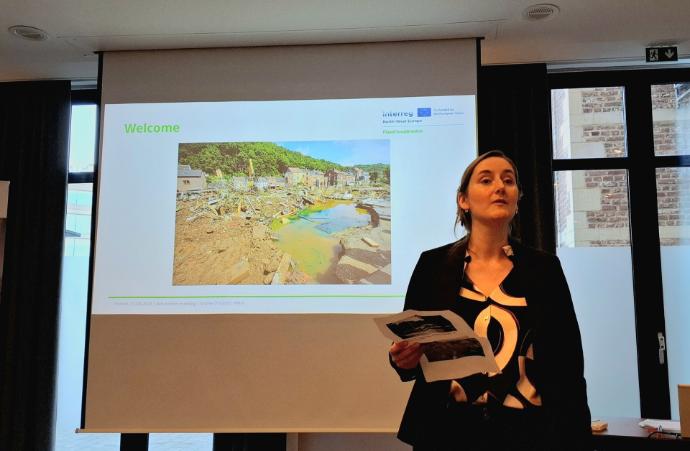
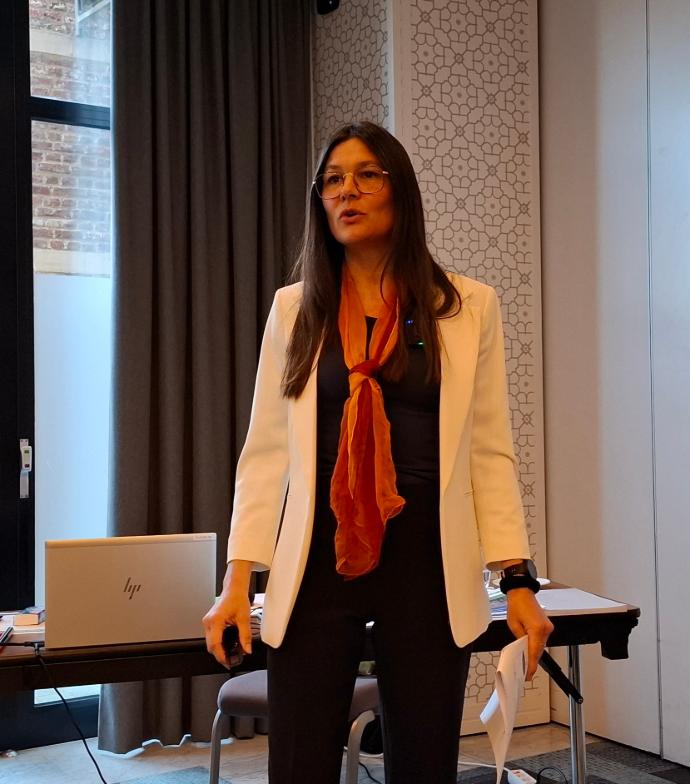
The project community was welcomed by Sophie d´Hondt from this meeting´s host organisation VMM and Project Coordinator Marie-Édith Ploteau from Emschergenossenschaft.
After a quick and energetic start the community split into different breakout sessions in order to discuss the following fields:
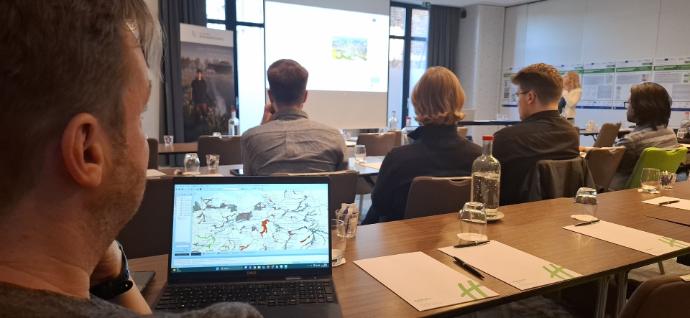
Improvement of early warning systems
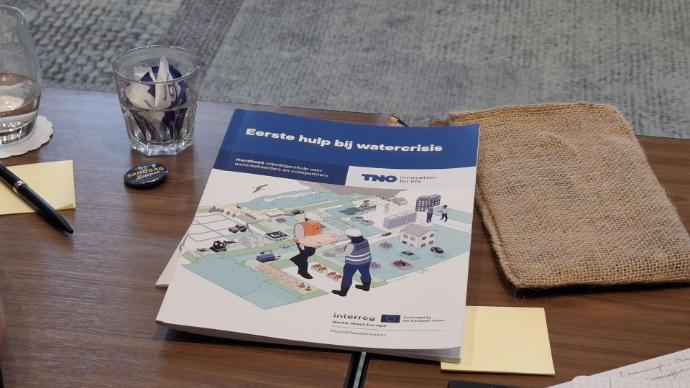
Transnational training schemes
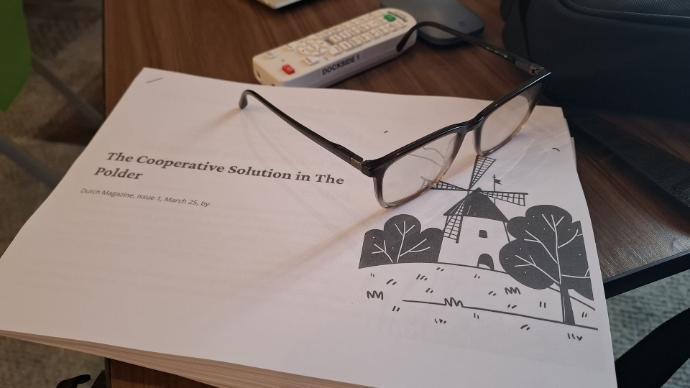
Involvement of residents, voluntary sector and private partners
Training the trainers in a transnational way
Marian Booltink (STOWA) and Christian von Spiczak- Brzezinski (Duisburg Firebrigade) gathered our partners in another Break Out Session dealing with the science of sandbags, showcasing methods and techniques in an interactive exercise.
Oscar van Dam (STOWA) showcased a sandbag manual, that could put into practice among our international partners in the session itself.
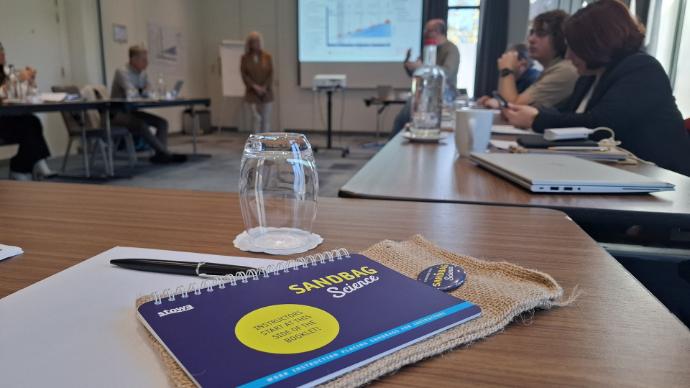
Involvement of residents, voluntary sector and private partners
Colin Glesner (SPW) and Eelco Koohlaas (HHNK) established a co-creative discussion around the question on how to combine existing crisis mangement systems with the involvement of the private sector (businesses), as well as how to tackle the challenge combining untrained volunteers in case of hazards.
Hear their key take aways from that breakoutsession here:
Train members of local crisis units
In this session hosted by Telka Schneider (EG) and Matthieu Oberhauser (SDIS57) participants presented and discussed different local and national approaches regarding preparation and evaluation of crisis units. This includes different checklists and scenarios that can be implemented via different methods such as serious games, podcasts, e-learning schemes or especially designed apps that follow the needs that dictate local conditions.
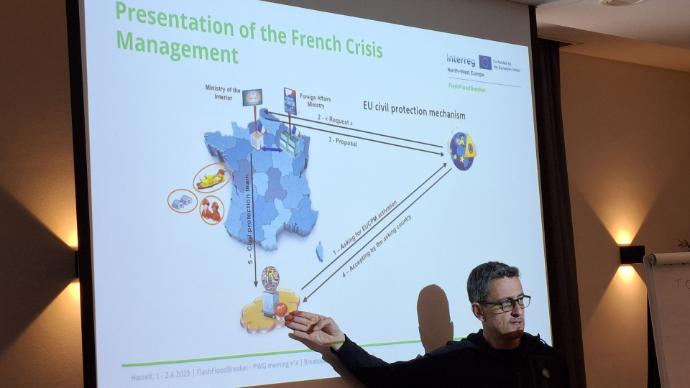
Here Domique Roth (Sapeurs Pompiers de la Moselle) explains the french systems of crisis management and its implications.
AI-based flood and impact forecast tools
In this session, chaired by Adrian Almoradie from the German Waterboard Lippeverband (LV) and Oguz Bektas from the University of Luxembourg (Uni.lu), experts shared their latest work on using artificial intelligence (AI) for flood and impact forecasting across Germany, the Netherlands, Belgium, and Ireland. Additionally presentation was given regarding how AI can be made more trustworthy, understandable, and reliable in different environments.
Since flood conditions vary from region to region, different AI approaches are being piloted in different catchment areas:
Germany & Belgium-Netherlands:
Waterboards like LV and representative from the program Waterveiligheid en Ruimte Limburg (WRL) are developing AI models that create detailed inundation maps (2-Dimension), helping predict floods in large river basins and steep valleys.
Netherlands:
The Waterboard Hoogheemraadschap Hollands Noorderkwartier (HHNK) is using a different AI model to improve water level (1-Dimension) predictions in low-lying polder areas.
Ireland:
Researchers at Munster Technological University (MTU) are exploring AI-driven image processing - drone technology to enhance flood forecasting in multiple locations.
The Uni.lu presented their approach on evaluating the reliability of these AI models. They are using SHAP (SHapley Additive exPlanations) to make AI predictions more transparent and easier to understand.
By comparing these different AI approaches, researchers aim to determine which methods work best in different conditions, ultimately improving flood forecasting and disaster preparedness.
FlashFloodBreaker on the ground
FlashFloodBreaker on the ground

4th Partner Meeting - Day 2
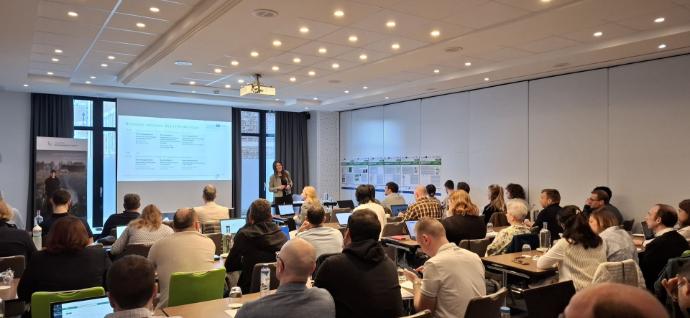
Marie-Édith Ploteau is opening the second day of FlashFloodBreaker Partner Meeting in Hasselt
On the second day of our FlashFloodBreaker partner Meeting partners and associated partners of the projects again split up into various breakout sessions. During the morning session they were dealing with different aspects of a wider understanding of preparedness and resilience building against Flash Flood events such as:
Involvement of residents, voluntary sector and private partners - tools and trainings
Planing and constructing a wet levee
Flood and flood impacts/ pluvial and fluvial modelling
Community of practices
Drones and real time data processing activities
Train students and young professionals
Community of practices and test of the IHEMFD

Erik Huijskes, one of the technical editors of the recently published International Handbook on Emergency Management for Flood Defences (IHEMFD)
In this Breakout session partners were invited to carry out a self-assessment of the maturity level of flood emergency management in their organisation on the base of the handbook. To arrive at a self-assessment matrix, the participating organisations decide on the resources and capabilities they want to focus on and elaborate the maturity levels for each fields.
4th Partner Meeting - Hasselt, Flanders